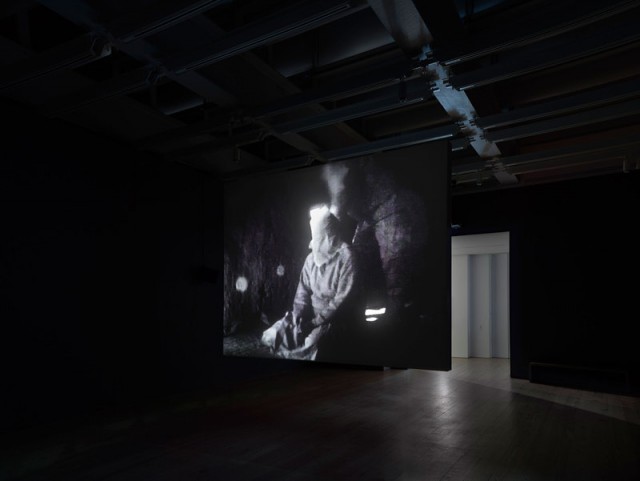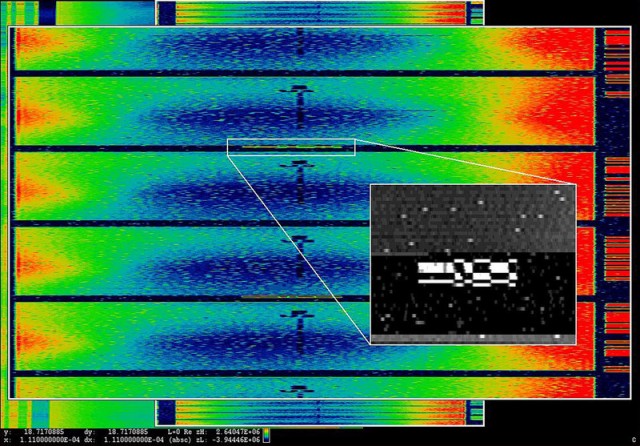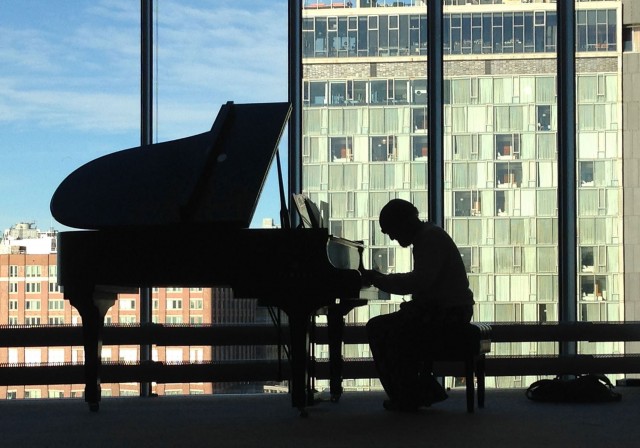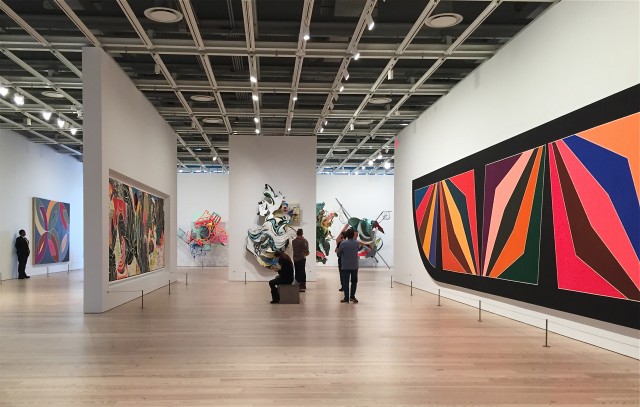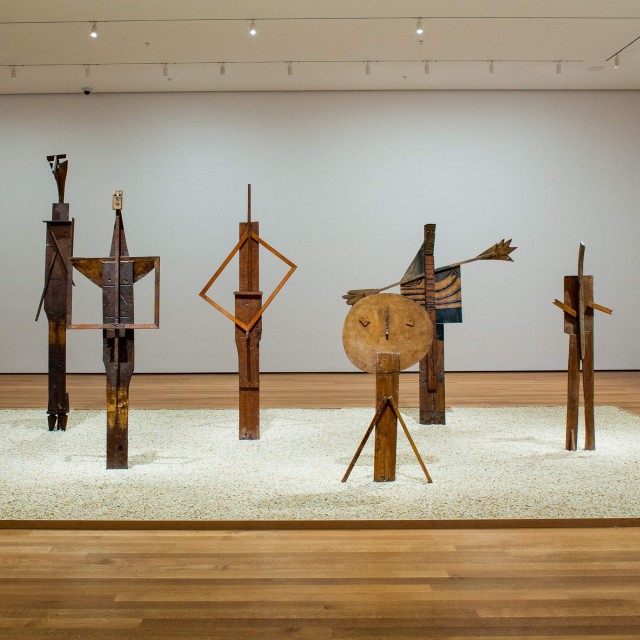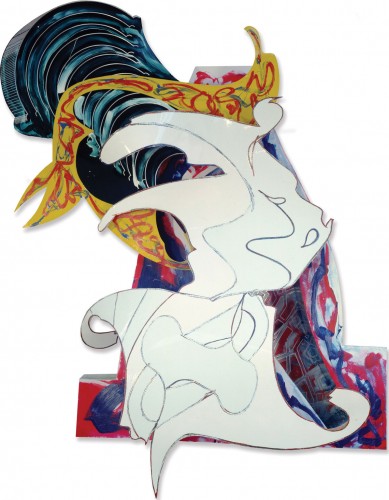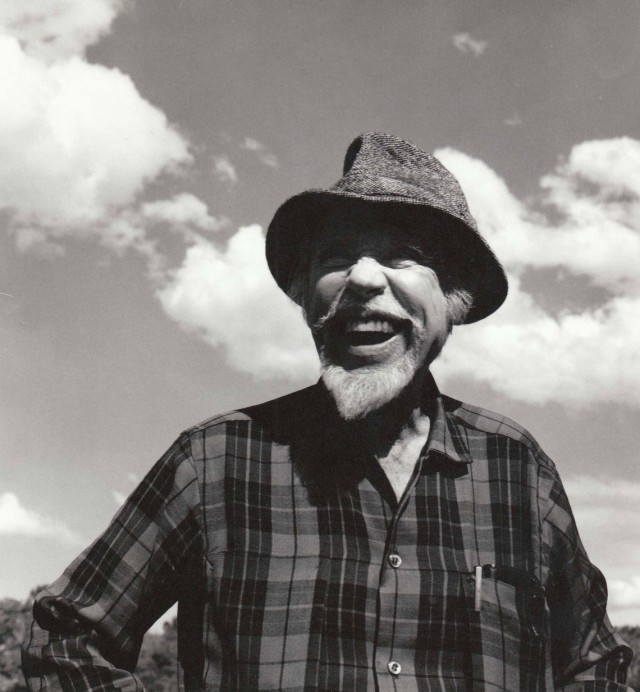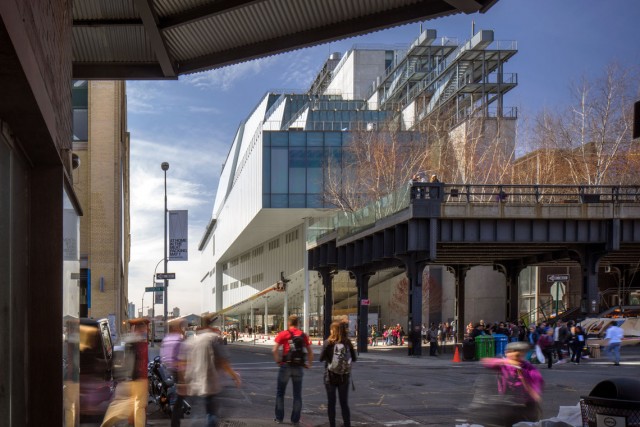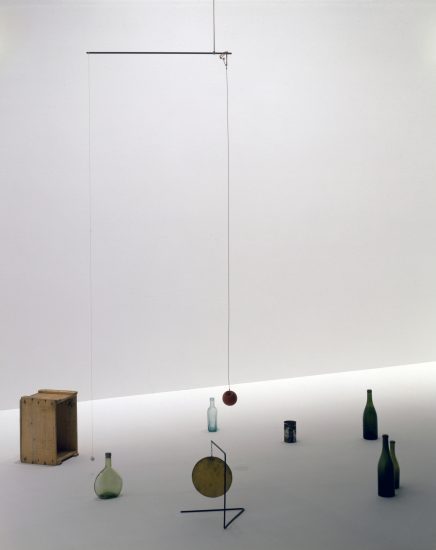
Christian Marclay will perform Alexander Calder’s “Small Sphere and Heavy Sphere” July 19-23 at the Whitney (photograph © Jerry L. Thompson. Calder Foundation, New York; Mary Calder Rower Bequest, 2011. © 2017 Calder Foundation, New York / Artists Rights Society (ARS), New York)
Whitney Museum of American Art
99 Gansevoort St.
Wednesday – Monday through October 23, $17-$22
212-570-3600
whitney.org
Alexander Calder, kineticism, and the Whitney have been inextricably linked since the institution acquired in May 1982 the Pennsylvania-born artist’s delightful “Calder’s Circus,” which, when on view, is always accompanied by a video showing the work in action. In addition, on rare occasions, it is activated live. The Whitney will be activating many of Calder’s other works in the new exhibition “Calder: Hypermobility,” set in motion at specific times to a specially commissioned sound walk by Jim O’Rourke. Activations, by motor or air, will take place multiple times each day (Monday to Thursday at 12 noon, 2:00, and 4:00; Friday at 12 noon, 2:00, 4:00, 7:30, 8:00, and 9:00; and Saturday and Sunday on the hour from 11:00 am to 4:00 pm). In addition, the Calder Foundation will activate the rarely exhibited “Object with Red Ball” on June 21 at 2:00, “Boomerangs” on June 28 at 2:00, “Tightrope” on July 9 at 4:00, “Goldfish Bowl” on July 12 at 2:00, and two untitled pieces on July 18 and 26 at 2:00, with more to come in August, September, and October. Below is a list of special performances by other artists during the run of the show, some of which require advance tickets.
Wednesday, July 19
through
Sunday, July 23
Christian Marclay performs Calder’s “Small Sphere and Heavy Sphere” (Calder’s first suspended mobile), with cellist Okkyung Lee, Susan and John Hess Family Theater
Saturday, August 5
and
Sunday, August 6
Jack Quartet, music by Earle Brown, John Cage, Morton Feldman, and others, Hurst Family Galleries
Thursday, September 7
through
Sunday, September 10
Arto Lindsay, noisemakers and rattles, in conjunction with the exhibition “Hélio Oiticica: To Organize Delirium,” Susan and John Hess Family Theater
Thursday, September 28
Jill Magid, Susan and John Hess Family Theater
Friday, September 29
through
Sunday, October 1
Math Bass and Lauren Davis Fisher perform “Quiet Work in Session,” Susan and John Hess Family Theater
Thursday, October 5
and
Friday, October 6
C. Spencer Yeh, Susan and John Hess Family Theater
Saturday, October 7
A screening of films commissioned by the Calder Foundation by artists Ephraim Asili, Rosa Barba, Lucy Raven, Agnès Varda, and others, followed by a conversation moderated by Victoria Brooks, Susan and John Hess Family Theater
Friday, October 13
through
Sunday, October 15
Empire State Works in Progress, with artist Abigail DeVille and director Charlotte Brathwaite, Susan and John Hess Family Theater
Friday, October 20
through
Sunday, October 22
Nora Schultz, Susan and John Hess Family Theater
